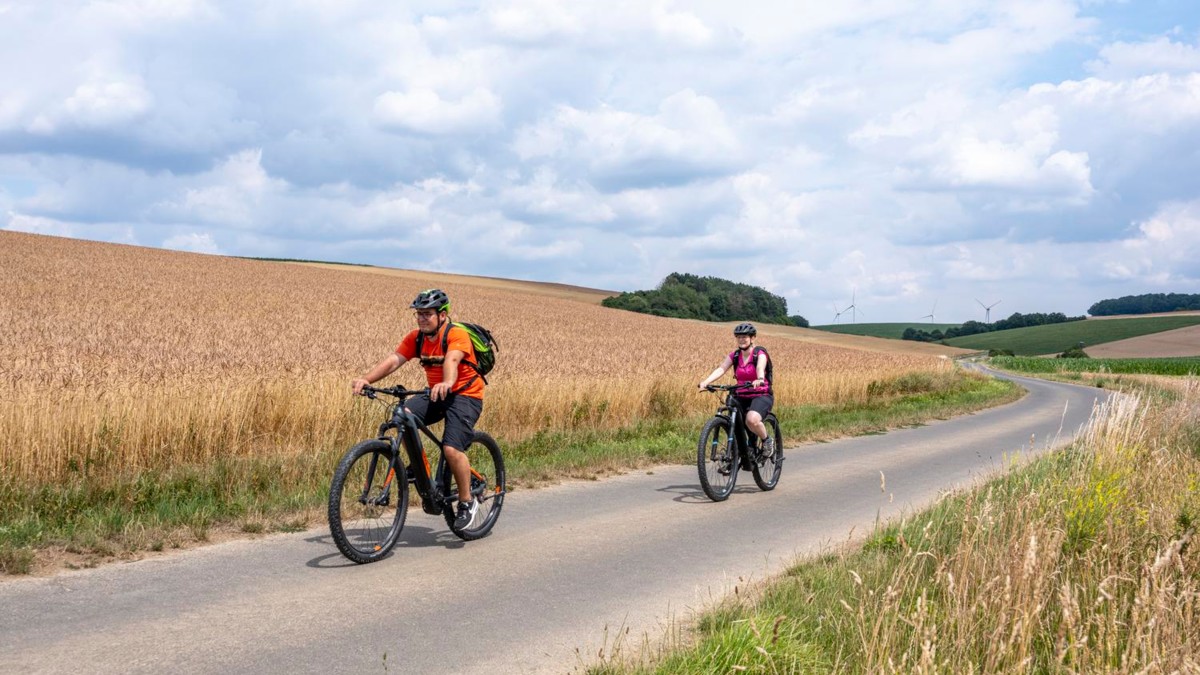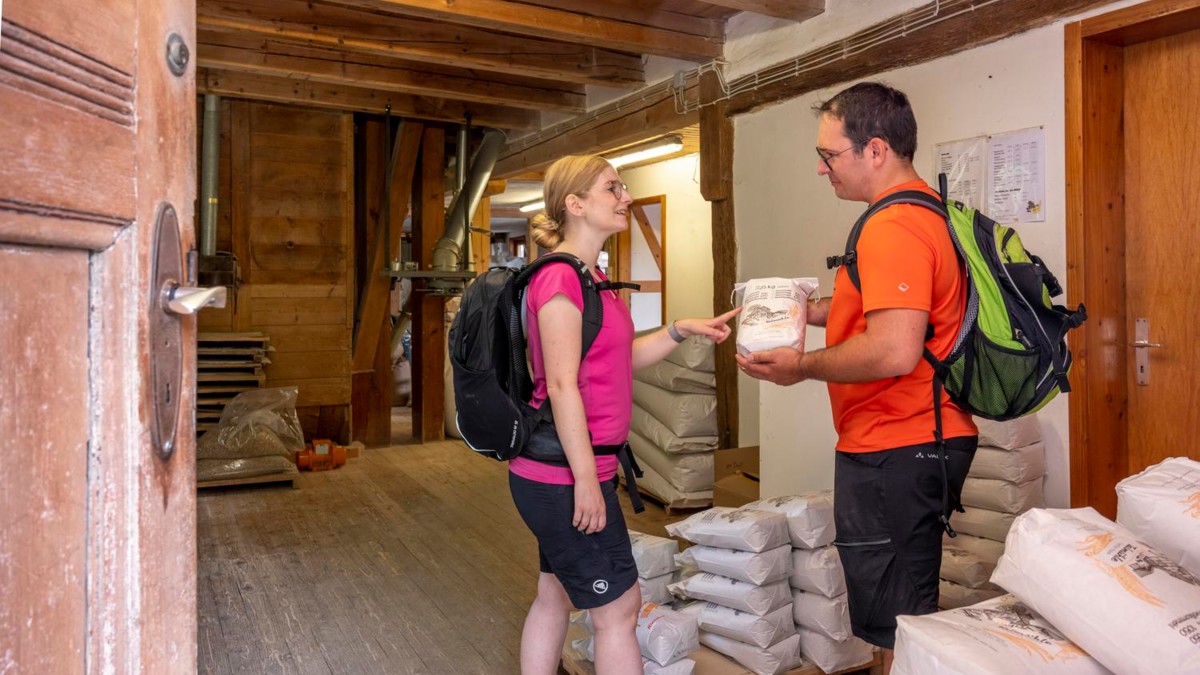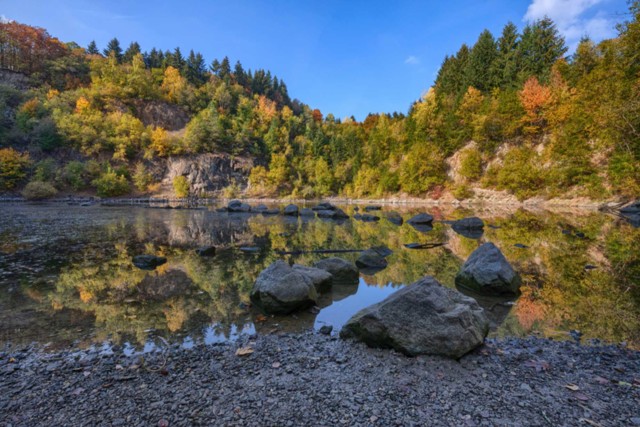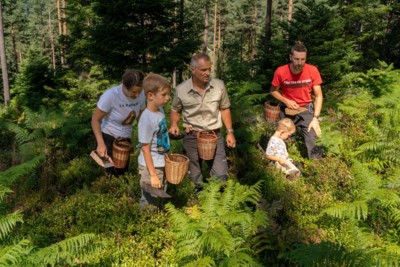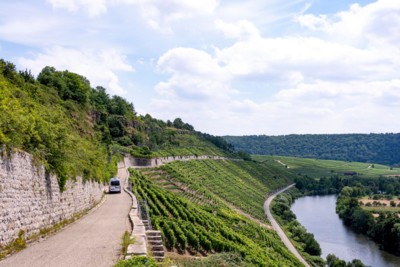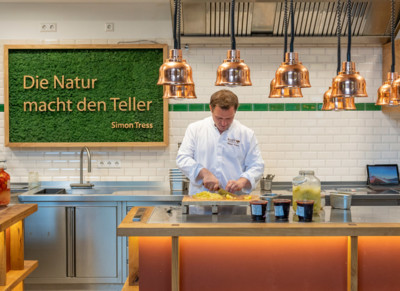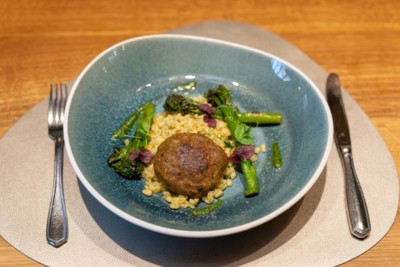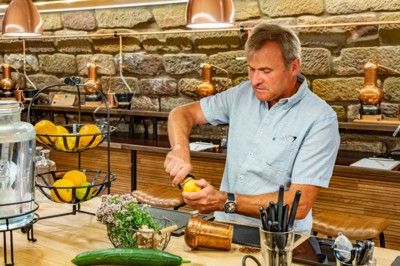Spelt Cycle Path
Cycling through the Home of Spelt
© TMBW, Gregor Lengler
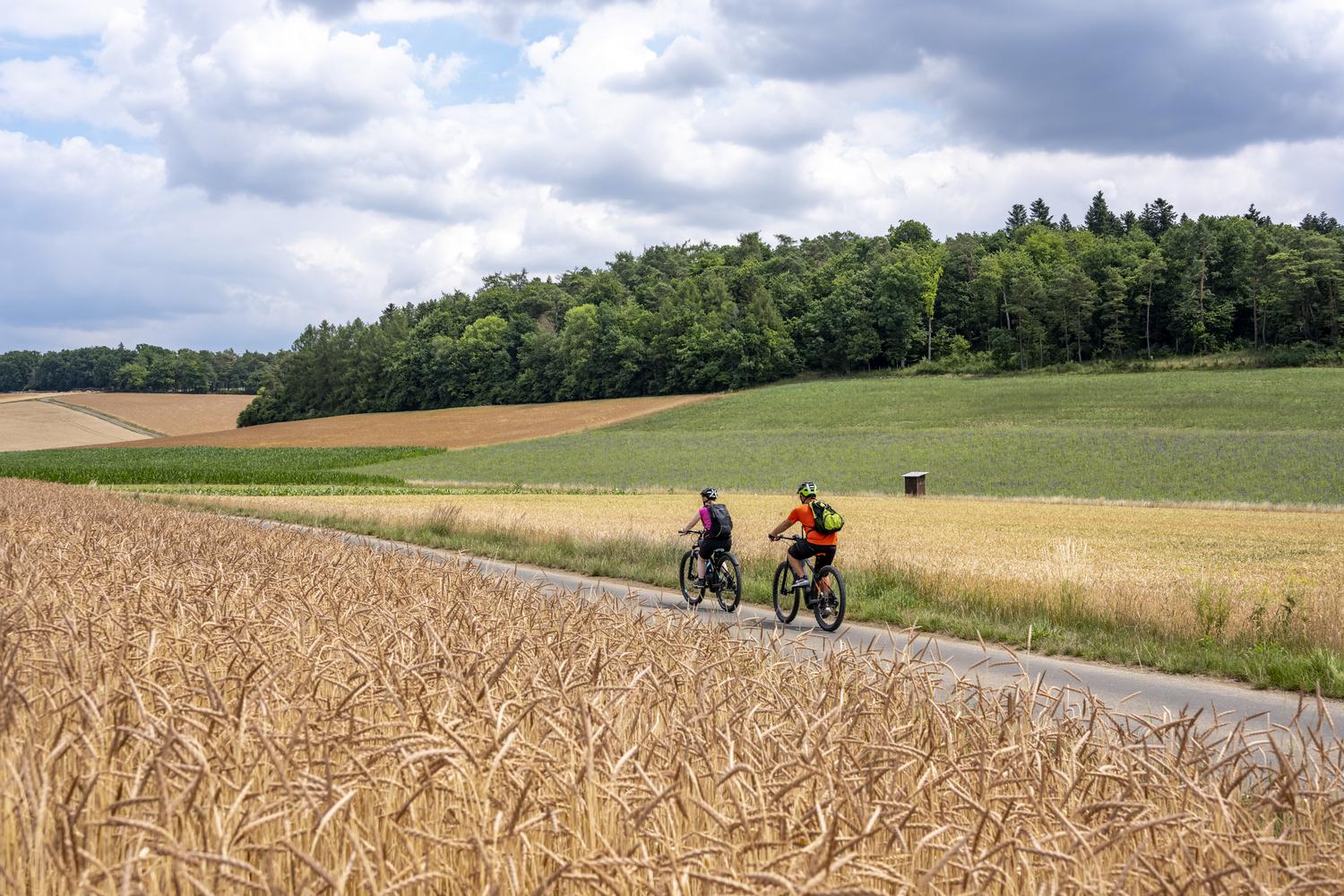

BW Story
Culinary Bauland: On the Road in the Odenwald Forest
You should never play with food, but you can cycle through it. On the two spelt cycle trails, between them 100 kilometres long, in the holiday region of Odenwald, maybe? The cycle trails wend their way through the spelt fields, bright with red and yellow flowers in July, and past the most important places in Franconian spelt production, in what is often called the Baden Bauland, between the rivers Neckar, Jagst and Tauber.
“For some reason I imagined they’d be bigger”, Daniel says to Tina, standing with his hands on his hips in front of the admittedly not that large half-timbered house. Darrenstrasse in Walldürn-Altheim is a protected monument, and it contains a total of 13 buildings in which spelt used to be dried, straight after being harvested. The pair take a rest at the disused stone well in front of the buildings. It’s a warm day in July, and hardly anyone is out and about in the village – apart from the swallows, who hunt by swooping through the sky. Are the residents all helping with the spelt harvest?
Tina and Daniel are cycling through Odenwald, or Bauland, to be more specific. This region, north-east of Moosbach and in eastern Baden-Württemberg, has a gently rolling landscape. There’s so much to discover in Bauland: the famous pilgrimage Basilica of the Holy Blood in Walldürn, the Obere Burg (Upper Castle) in Hardheim – and, of course, the spelt. You will see all of them on spelt cycle trails 1 and 2, which between them cover almost 100 kilometres. Today, the cycling enthusiast couple is exploring Route 2 on their e-bikes. Route 2 takes them along well-signposted paths from the picturesque half-timbered town of Walldürn to Rosenberg, via Boxberg. But what is spelt, exactly? And why does it have such an important role here? Armin Mechler, one of the region’s largest spelt producers, knows the answer. And that’s where these two are heading for right now.
 Spelt – an Unlikely Saviour</span><span>
Spelt – an Unlikely Saviour</span><span>
Against the Famine
Spelt – an Unlikely Saviour

Spelt was invented around 1660, when dinkel was harvested two to three weeks early due to a looming famine. |© TMBW, Gregor Lengler
| © TMBW, Gregor Lengler“Spelt is dinkel, harvested early”, Mechler reveals, as he walks with Tina and Daniel along the edge of his fields. And if the summers of the mid-17th century had not been so horribly cold and rainy, spelt might have never been discovered. For a few years around 1660, the weather conditions in the region were so bad that the farmers’ crops rotted in the fields, and famine loomed. That’s why they harvested the dinkel before it ripened, and dried it over beechwood fires. And, lo and behold, roasting gave the grain a delicate nutty flavour, which made it perfect for using in soups and many other dishes. Since then, some of the dinkel has regularly been harvested two to three weeks early, as spelt.
Mechler grew up with spelt. His family have cultivated the grain for generations. The producer was also one of the regional spelt growers who trademarked Bauland spelt under the name Fränkischer Grünkern (Franconian Spelt), so it is now protected. Bauland spelt is the oldest variety, incredibly aromatic, and the only type of spelt on the market that is grown here. “Our spelt sales have their ups and downs”, Armin says; “sometimes we sell a lot, and sometimes rather less. Currently sales are high, as spelt is high in B-vitamins, iron and magnesium, making it a real superfood. But it actually tastes good too”.
The final touch
From Grain to Food
Soft spelt needs to be dried at a temperature of 150 degrees directly after harvesting. Mechler does this in an industrial drier standing in one of his large warehouses near Walldürn-Altheim. But before the grain can get to the customers, it still needs to be dehusked, which means removing the leaves that are firmly attached to the grain. This takes place in the Talmühle Haas mill, the destination of Tina and Daniel’s cycle tour.
It is located between a copse of trees and the spelt fields, bright with red and yellow flowers, on the river Kirnau in a small valley outside Rosenberg. As the two cyclists arrive at the picturesque half-timbered building, a truck is unloading its cargo of dinkel through a floor grate. Mill-operator Evi Haas watches this before disappearing back inside the mill, in which the spelt machinery is buzzing at full speed. Tina and Daniel leave their bikes at the entrance to the mill’s shop and go inside. There’s space in the cycle backpack for a small packet of Franconian spelt – after all, it’s rare to buy anything with so few food miles as here. In the mill shop, off the spelt processing area, there is flour, muesli, pasta and cereals, all purchased from regional growers and processed here. A little later, as Tina and Daniel unlock their bikes, Evi tells them about a nearby restaurant that they absolutely must visit – every year it has a special menu for the Spelt Weeks. “You can get spelt in any way it can be cooked – pancakes, soup, dessert, even as chocolates”, Evi reports.
This year, Tina and Daniel are taking it slowly, with spelt soup and spelt croquettes. They may be ready for the chocolates next year, when they will come back to explore Route 1.
 Odenwald
Odenwald
More Information
Odenwald
Want to Browse more?
You Might Also Be Interested In


